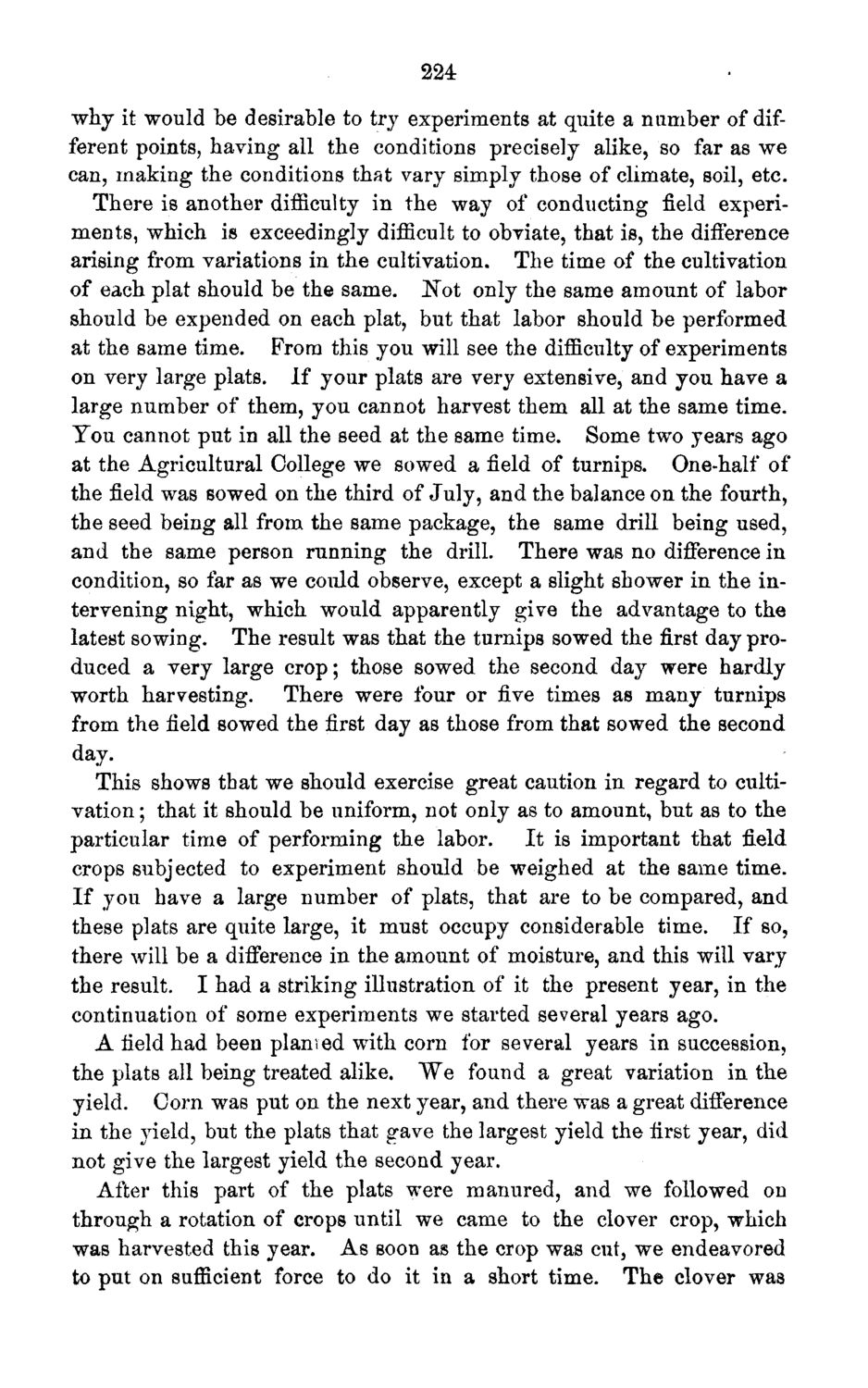| |
| |
Caption: Board of Trustees Minutes - 1871
This is a reduced-resolution page image for fast online browsing.

EXTRACTED TEXT FROM PAGE:
224 why it would be desirable to try experiments at quite a number of different points, having all the conditions precisely alike, so far as we can, making the conditions that vary simply those of climate, soil, etc. There is another difficulty in the way of conducting field experiments, which is exceedingly difficult to obviate, that is, the difference arising from variations in the cultivation. The time of the cultivation of each plat should be the same. Not only the same amount of labor should be expended on each plat, but that labor should be performed at the same time. From this you will see the difficulty of experiments on very large plats. If your plats are very extensive, and you have a large number of them, you cannot harvest them all at the same time. You cannot put in all the seed at the same time. Some two years ago at the Agricultural College we sowed a field of turnips. One-half of the field was sowed on the third of July, and the balance on the fourth, the seed being all from the same package, the same drill being used, and the same person running the drill. There was no difference in condition, so far as we could observe, except a slight shower in the intervening night, which would apparently give the advantage to the latest sowing. The result was that the turnips sowed the first day produced a very large crop; those sowed the second day were hardly worth harvesting. There were four or five times as many turnips from the field sowed the first day as those from that sowed the second day. This shows that we should exercise great caution in regard to cultivation ; that it should be uniform, not only as to amount, but as to the particular time of performing the labor. It is important that field crops subjected to experiment should be weighed at the same time. If you have a large number of plats, that are to be compared, and these plats are quite large, it must occupy considerable time. If so, there will be a difference in the amount of moisture, and this will vary the result. I had a striking illustration of it the present year, in the continuation of some experiments we started several years ago. A field had been planted with corn for several years in succession, the plats all being treated alike. We found a great variation in the yield. Corn was put on the next year, and there was a great difference in the yield, but the plats that gave the largest yield the first year, did not give the largest yield the second year. After this part of the plats were manured, and we followed on through a rotation of crops until we came to the clover crop, which was harvested this year. As soon as the crop was cut, we endeavored to put on sufficient force to do it in a short time. The clover was
| |